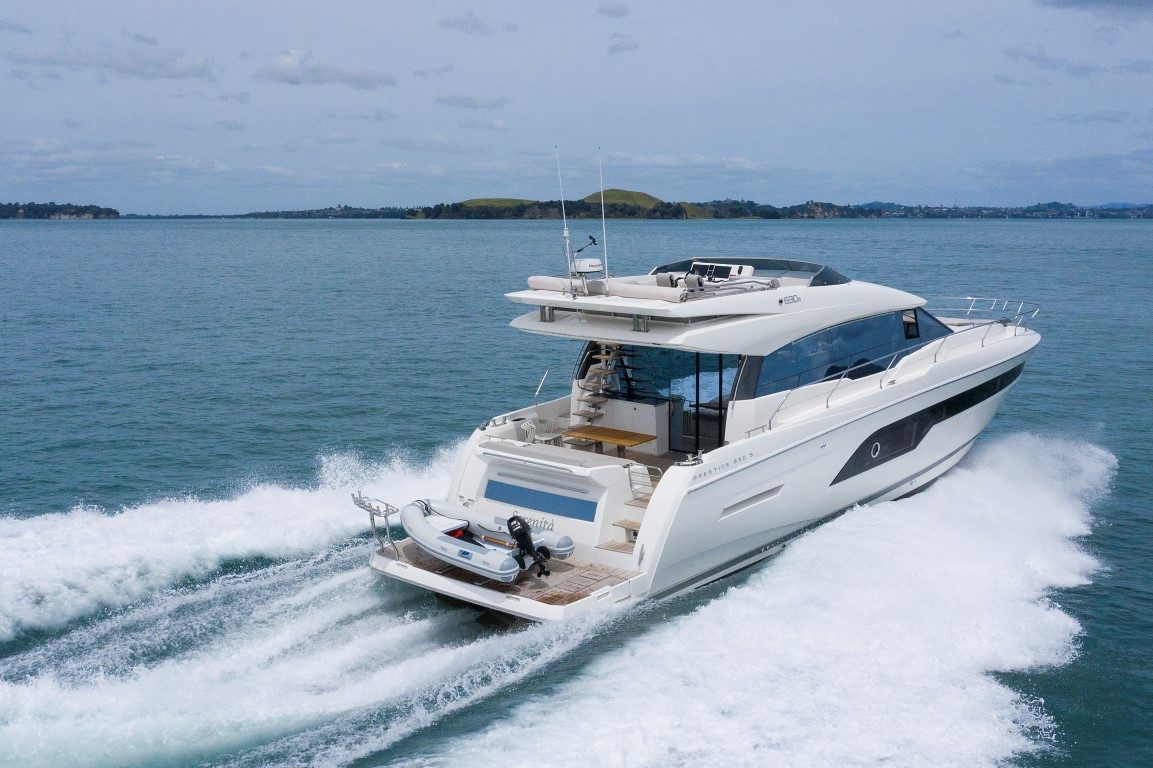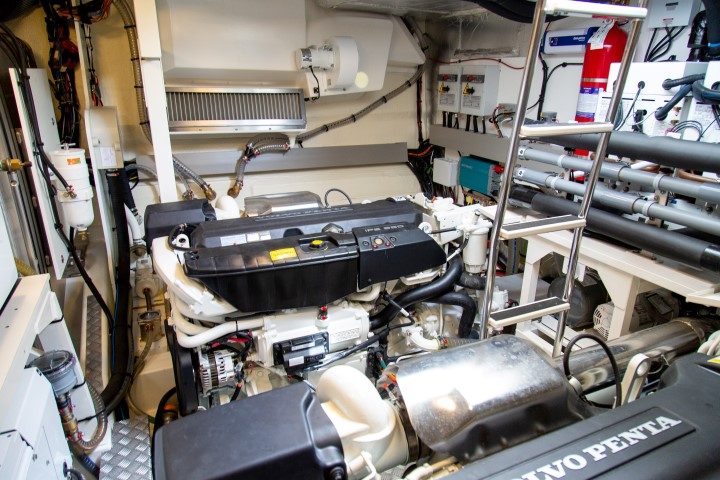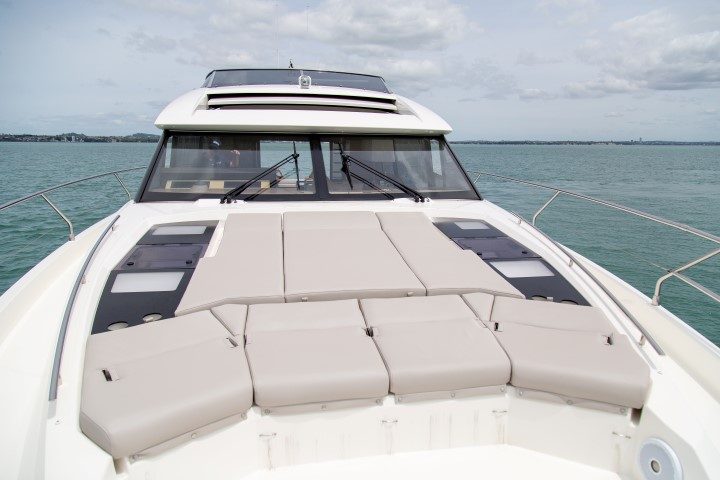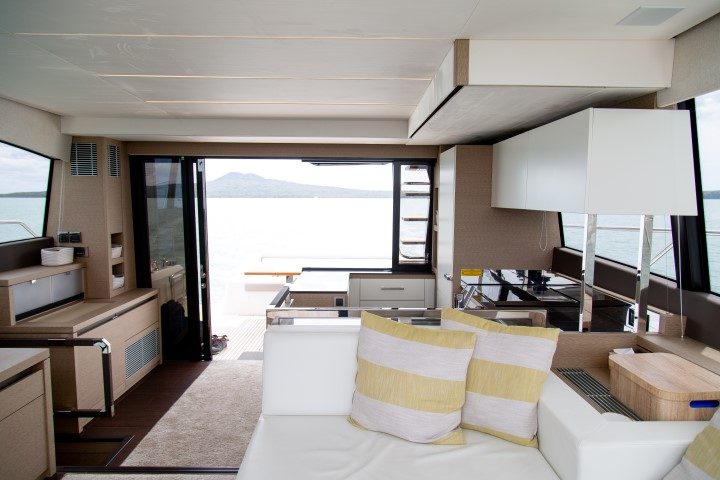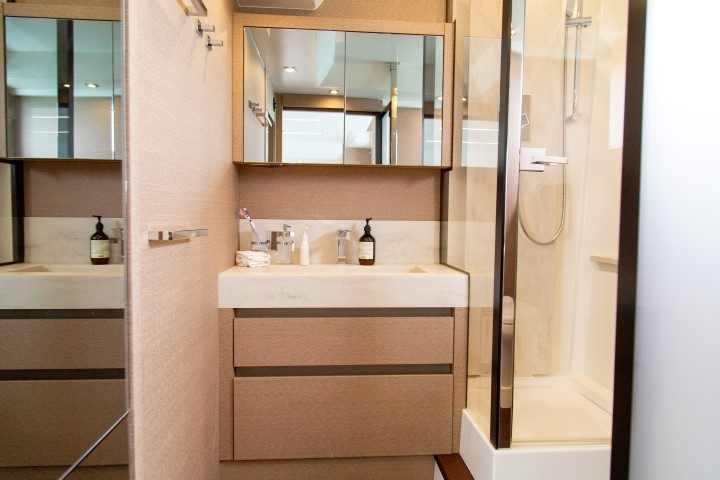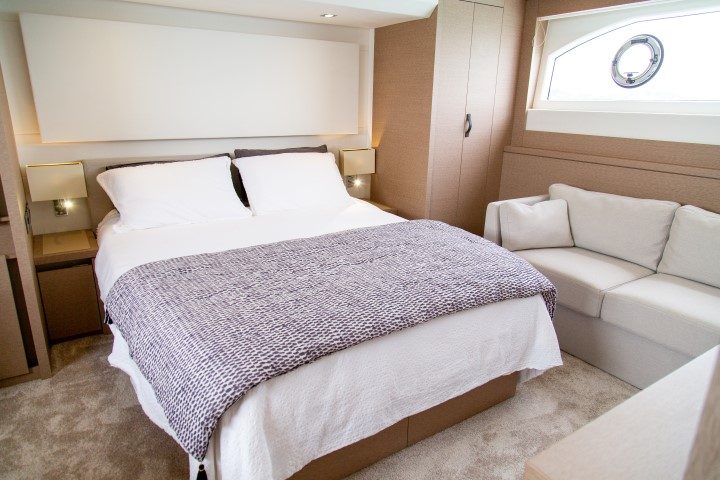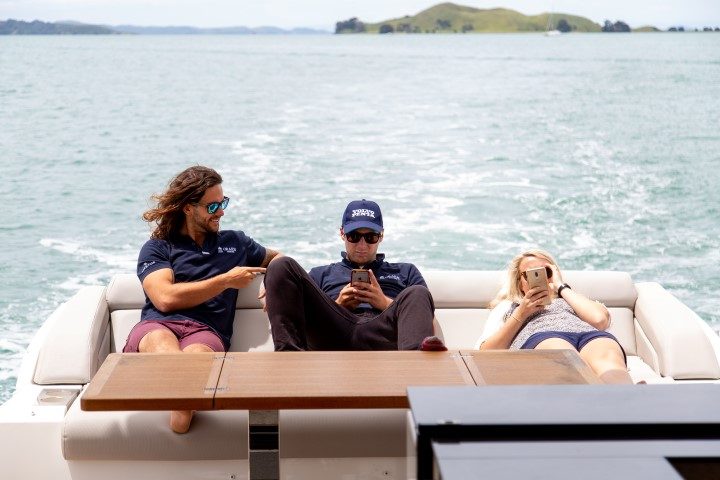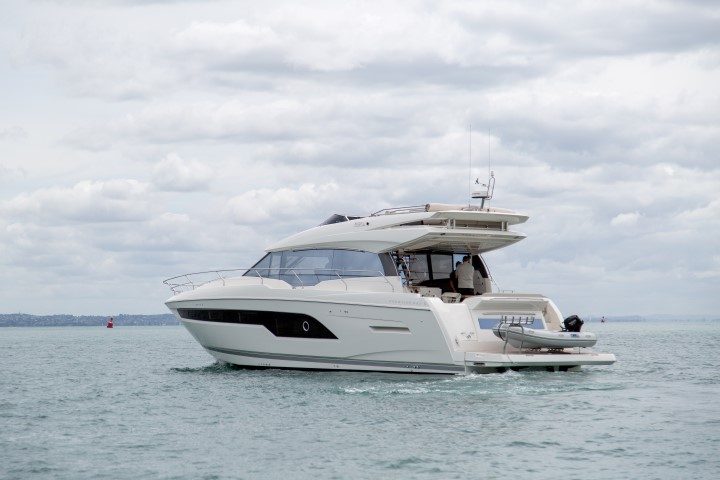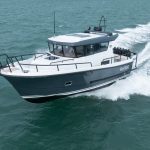‘Behemoth’ is a word which springs to mind or, perhaps more nautically, ‘leviathan’.
- Luxury cruising with sporty styling
- Owners' cabin has separate access
- Every cabin has an ensuite bathroom
- IPS plus bowthruster affords stress-free docking
- Gyro stabiliser improves comfort at rest and underway

